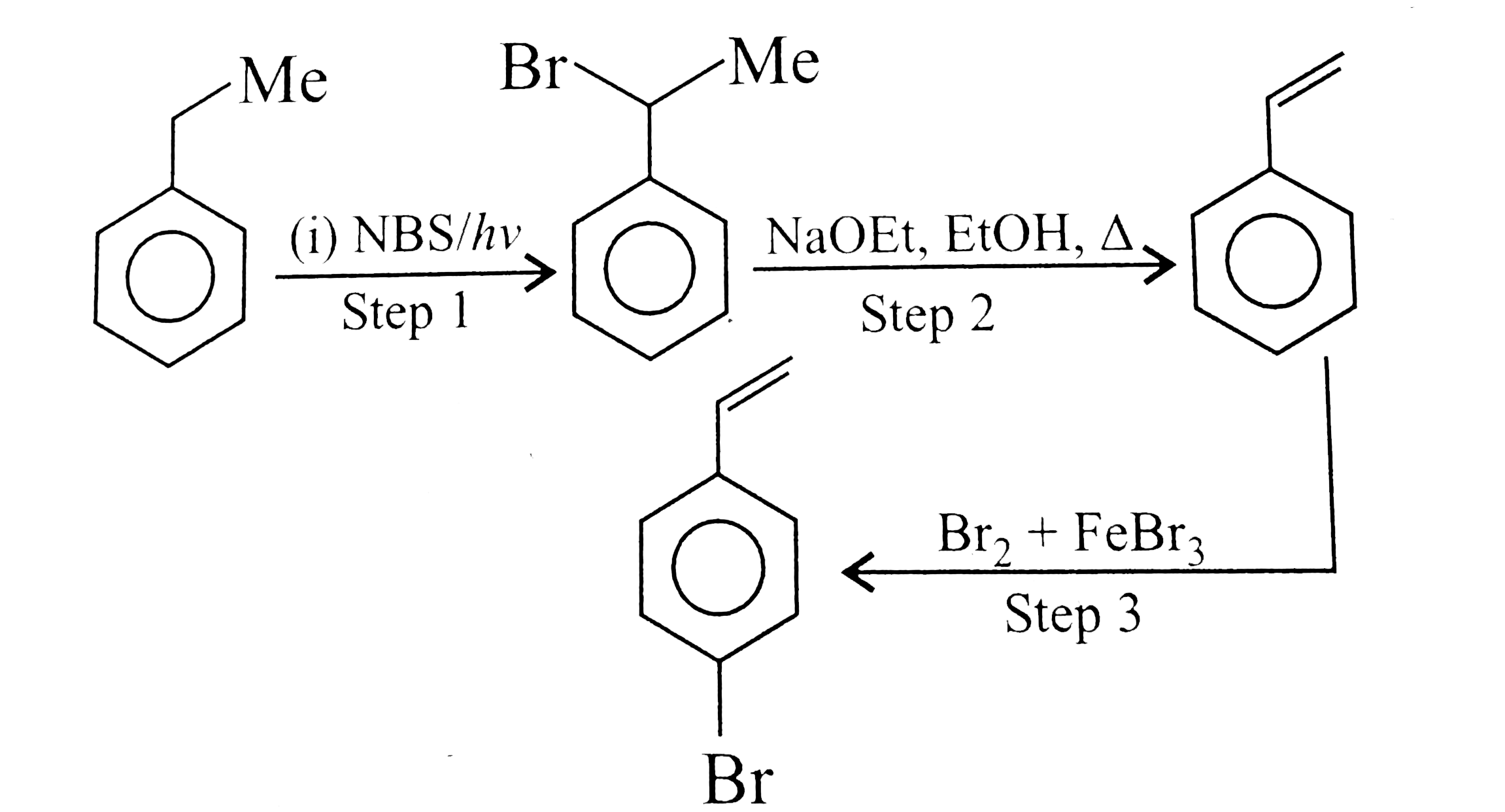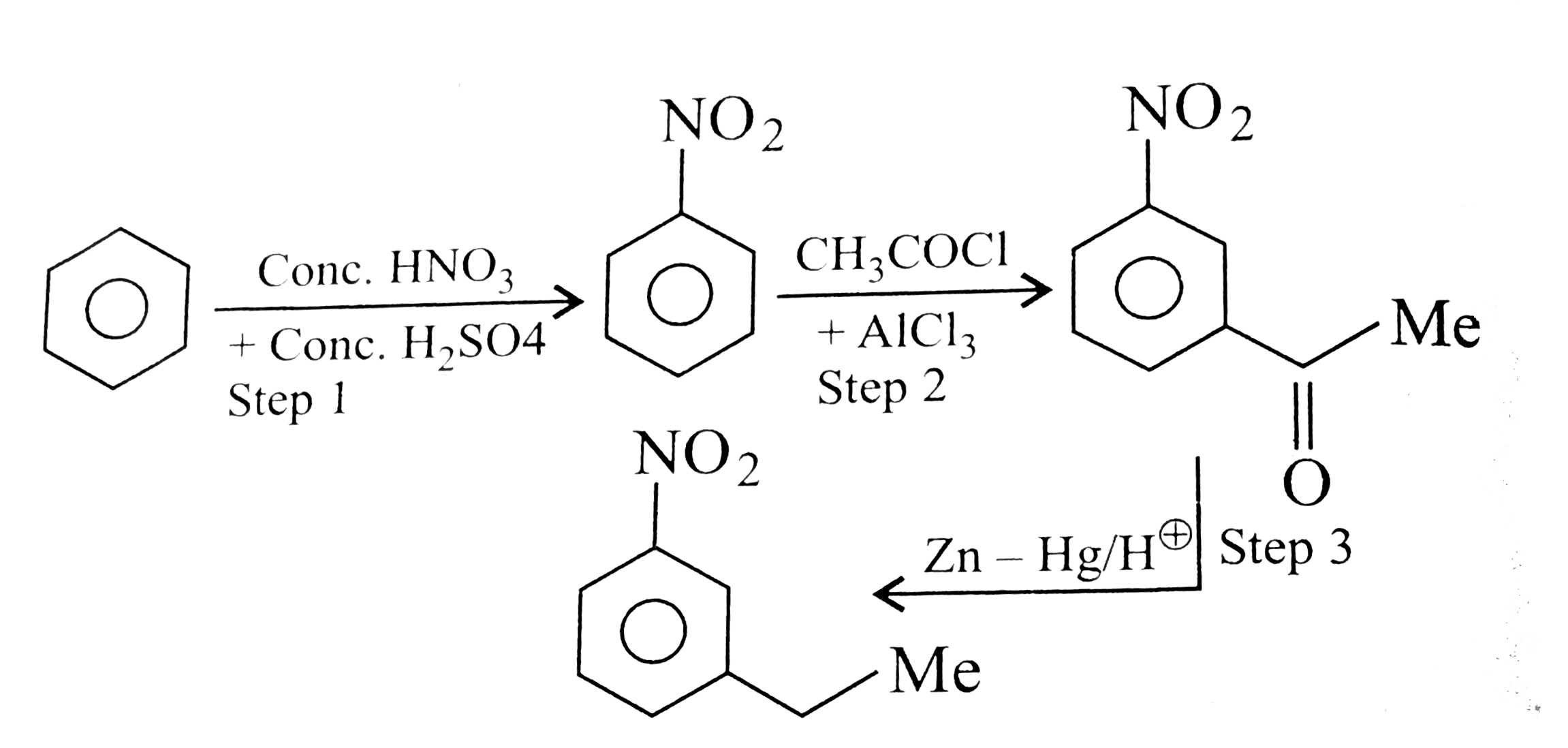From nitration of aniline, which of the following steps is followed?
Direct nitration using nitrating mixture (conc. HNO3+conc. H2SO4) followed by oxidation.
Using fuming HNO3 carrying out reaction at 273K followed by hydrolysis.
Using NaNO2 and HCl followed by reaction with conc. HNO3 followed by hydrolysis.
Acetylation followed by nitration and hydrolysis.
To solve the question regarding the nitration of aniline and the steps involved, we can break down the process step by step:
Step 1: Understand the Nitration Process
Nitration of aniline involves introducing a nitro group (-NO2) into the aromatic ring of aniline (C6H5NH2). However, the amino group (-NH2) is a strong activating group and can lead to the formation of undesired products if not handled properly.
Step 2: Identify the Problem with Direct Nitration
Direct nitration of aniline using a nitrating mixture (HNO3 and H2SO4) can lead to the oxidation of the amino group to a nitro group, which is not the desired outcome. Therefore, direct nitration is not a suitable method.
Step 3: Evaluate the Options
1. Direct Nitration: This method is not suitable as it can convert the -NH2 group into a -NO2 group.
2. Using Fuming Nitric Acid: This is also a direct nitration method and will have similar issues as above.
3. Using NaNO2 and HCl: This method forms a diazonium salt, which is not the desired outcome for this nitration process.
4. Acetylation followed by Nitration: This method involves first blocking the amino group through acetylation, then performing nitration, and finally hydrolyzing to regenerate the amino group.
Step 4: Acetylation Process
In the acetylation step, aniline (C6H5NH2) is treated with acetyl chloride (CH3COCl), which converts the amino group into an acetamido group (C6H5NHCOCH3). This prevents the amino group from being oxidized during nitration.
Step 5: Nitration Step
After acetylation, the compound is treated with a nitrating mixture (HNO3 and H2SO4) at a controlled temperature. The nitro group (-NO2) is introduced into the aromatic ring without affecting the acetamido group.
Step 6: Hydrolysis
Finally, the acetamido group can be hydrolyzed back to the amino group (-NH2) using water or an aqueous acid, yielding the final product, which contains both the -NH2 and -NO2 groups on the benzene ring.
Conclusion
The correct sequence of steps for the nitration of aniline is:
1. Acetylation of aniline to protect the amino group.
2. Nitration of the acetylated aniline.
3. Hydrolysis to regenerate the amino group.
Thus, the correct answer is Option 4: Acetylation followed by nitration and hydrolysis.
Nitration of aniline involves introducing a nitro group (-NO2) into the aromatic ring of aniline (C6H5NH2). However, the amino group (-NH2) is a strong activating group and can lead to the formation of undesired products if not handled properly.
Direct nitration of aniline using a nitrating mixture (HNO3 and H2SO4) can lead to the oxidation of the amino group to a nitro group, which is not the desired outcome. Therefore, direct nitration is not a suitable method.
1. Direct Nitration: This method is not suitable as it can convert the -NH2 group into a -NO2 group.
2. Using Fuming Nitric Acid: This is also a direct nitration method and will have similar issues as above.
3. Using NaNO2 and HCl: This method forms a diazonium salt, which is not the desired outcome for this nitration process.
4. Acetylation followed by Nitration: This method involves first blocking the amino group through acetylation, then performing nitration, and finally hydrolyzing to regenerate the amino group.
In the acetylation step, aniline (C6H5NH2) is treated with acetyl chloride (CH3COCl), which converts the amino group into an acetamido group (C6H5NHCOCH3). This prevents the amino group from being oxidized during nitration.
After acetylation, the compound is treated with a nitrating mixture (HNO3 and H2SO4) at a controlled temperature. The nitro group (-NO2) is introduced into the aromatic ring without affecting the acetamido group.
Finally, the acetamido group can be hydrolyzed back to the amino group (-NH2) using water or an aqueous acid, yielding the final product, which contains both the -NH2 and -NO2 groups on the benzene ring.
The correct sequence of steps for the nitration of aniline is:
1. Acetylation of aniline to protect the amino group.
2. Nitration of the acetylated aniline.
3. Hydrolysis to regenerate the amino group.
Topper's Solved these Questions
- AMINES BOOK - NCERT FINGERTPS ENGLISHCHAPTER - AMINES EXERCISE - Classification
2 Videos
- AMINES BOOK - NCERT FINGERTPS ENGLISHCHAPTER - AMINES EXERCISE - Preparation Of Amines
5 Videos
- ALDEHYDES, KETONES AND CARBOXYLIC ACIDSBOOK - NCERT FINGERTPS ENGLISHCHAPTER - ALDEHYDES, KETONES AND CARBOXYLIC ACIDSEXERCISE - Assertion And Reason
15 Videos
- BIOMOLECULESBOOK - NCERT FINGERTPS ENGLISHCHAPTER - BIOMOLECULESEXERCISE - Assertion And Reason
15 Videos
Similar Questions
Knowledge Check
Which of the following compounds is most readily nitrated ?
AbenzeneBphenolCtolueneDnitrobenzene
Which of the following is a step-growth polymer?
View SolutionFor making GMO , which of the following step is mandatory ?
View SolutionIn the following reaction, which of the following steps is wrong ?

View SolutionWhich of the following is more basic than aniline?
View SolutionWhich of the following is more basic than aniline?
View SolutionIn the following reaction, which of the folliwing steps is wrong?

View SolutionIn the following reaction, which of the folliwing steps is wrong?

View Solution

